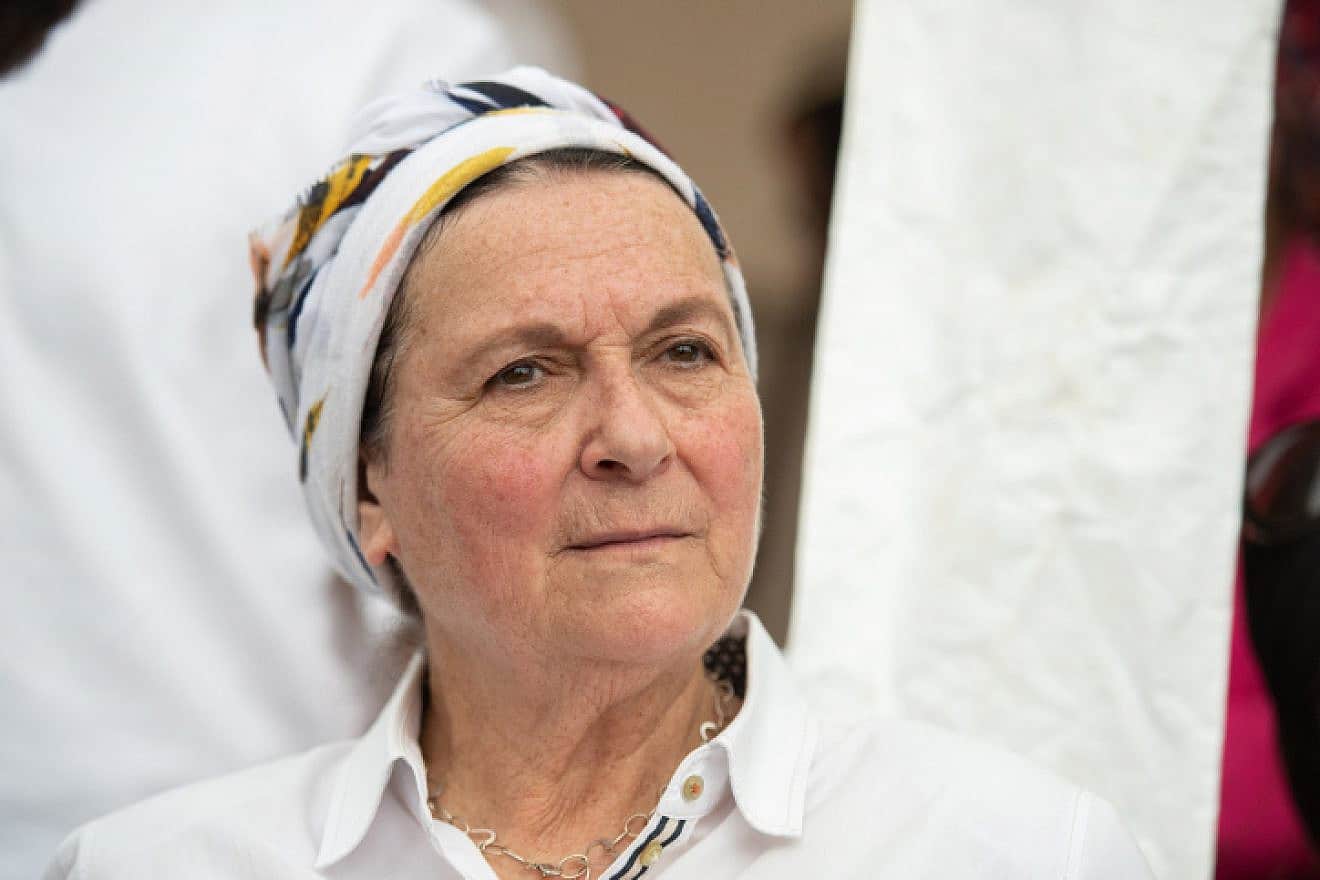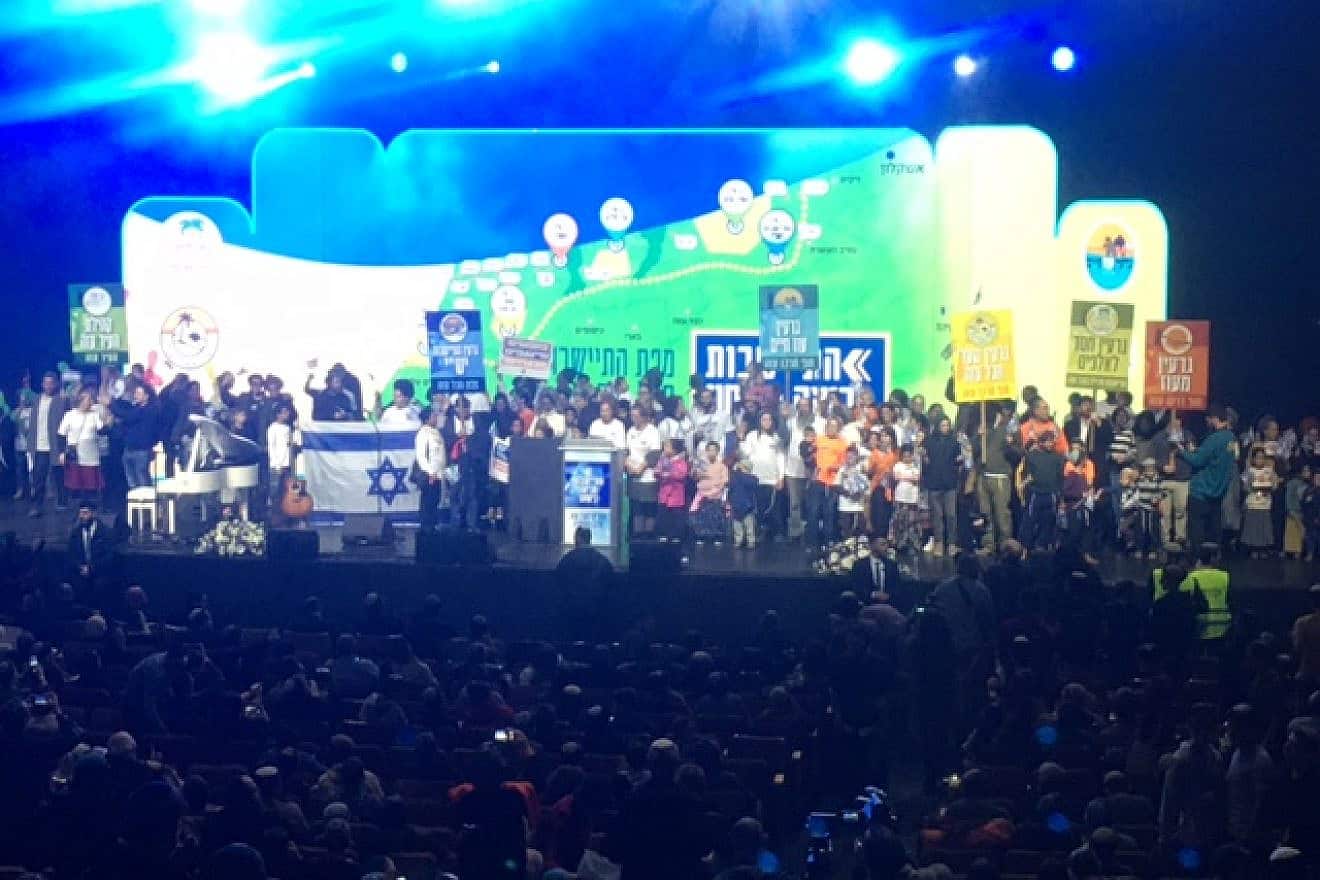In an exuberant display of support for re-establishing Jewish communities in the Gaza Strip, 5,000 activists filled three large halls to overflowing at the International Convention Center in Jerusalem on Sunday night.
A kind of Zionist revival meeting, the conference featured music, a cheering crowd, and a parade of rabbis and politicians delivering speeches and prayers.
Religious Zionists made up the vast majority of the participants, with a smattering of haredim, or ultra-Orthodox. Notable was the marked youth of the attendees, with many of them tweens.
The energetic mega-event marked a milestone in a burgeoning movement begun following the Oct. 7 massacre calling for a Jewish return to Gush Katif.
Gush Katif was the largest bloc of 21 Jewish settlements forcibly evacuated from the Strip by Israel in 2005 as part of its disengagement plan. (Four additional settlements were evacuated in northern Samaria.) In total, more than 8,000 Jews were removed from their homes. Even Jewish graves were dug up and bones reinterred.
The traumatic event remains an open wound for Israel’s settlement movement—one that it determined to reverse when the opportunity arose.
With the Israel Defense Forces regaining control of the Strip, it views that time as now. “The nation of Israel returns home,” proclaimed one of the taglines of the event.
“Together, we will fix the injustice and undo the disgrace in Gaza and northern Samaria,” Yossi Dagan, head of the Samaria Regional Council and one of the event organizers, told the crowd to wild applause.
The event was the brainstorm of Dagan and long-time settlement activist Daniella Weiss, a former mayor of Kedumim in Samaria.

“The aim of this assembly is to bring people together to say we have to return to the Gaza Strip and establish Jewish communities right away in the Gush Katif area,” Weiss told JNS.
“We want people to return not only to the places that had been evacuated but also to new places in the Gaza Strip. Gaza will be Jewish,” she declared.
Movement activists aren’t waiting for government permission to get started. A young volunteer, Mordechai, from the haredi city of Beitar Illit in Judea, handed out flyers calling for volunteers to join in building ‘Gaza City,’ a Jewish municipality in the heart of the Gaza Strip.
Booths representing proposed Jewish communities to be spread across the Gaza Strip—an enormous map above showed their exact locations—afforded attendees the chance to sign up for the one of their choosing.
Hundreds of families have already formed settlement kernels for these new communities. At one point, dozens of families mounted the stage carrying standards bearing the insignia of their prospective Gaza towns.
The movement to rebuild Jewish Gaza faces what is likely to be insurmountable opposition at this time. Internationally, there is an expectation that Israel will allow Palestinian Arabs pushed south by the fighting to return to their homes as soon as possible.
Israeli Prime Minister Benjamin Netanyahu has himself described the idea of resettling Jews in the Gaza Strip as “unrealistic.”
Weiss said that part of the purpose of the event was to put pressure on the Netanyahu government.
“Netanyahu has to manage pressure from the United States and the outside world,” she said. “But he should know that after this I will organize a bigger rally and a bigger one and a bigger one because the Jewish nation wants to live.”
‘Security and settlement go hand in hand’
What settlement activists have going for them is that the general public is open to the idea. A mid-November poll found that a majority of Israelis support Jewish settlement in Gaza.
Before the 2005 disengagement, the prevalent attitude among Israelis was that the Arabs in Gaza were a burden. Uprooting the Jewish communities was seen as “a reasonable price for ridding Israel of what has long been a painful and valueless thorn in its side,” wrote author Hillel Halkin in The New York Sun in February 2004, expressing the dominant view at the time.
Warnings by the disengagement’s opponents that evacuation would lead to a terrorist mini-state were dismissed. “We warned and shouted. … But they didn’t listen. And missiles landed in Sderot, in Beersheva, in Ashkelon,” National Security Minister Itamar Ben-Gvir, who is also head of the Otzma Yehudit Party, told the crowd on Sunday.
The event’s title, “Settlement brings security,” underscored the message that a Jewish Gaza is good for the country’s security.
Israel has finally internalized the message, Weiss told JNS.
“The public understands. Security and settlement go hand in hand. A mother pushing a baby stroller down the street from one community to another paves the way for the army,” she said.
Weiss told the crowd: “There are two possibilities. Either Gaza will become a flourishing Jewish community, or heaven forbid, it will revert back to becoming a murderous Arab threat to the State of Israel.
“Not Hamas, not the Palestinian Authority, not the U.N., not UNRWA—only the nation of Israel will settle all of the Gaza Strip and will control all of the Gaza Strip,” she said.
A few conference speakers touched on Gaza’s long Jewish history. A poem by Israel ben Moses Najara (c. 1555-1625), a rabbi and poet who lived in the city of Gaza and was buried there, was handed out at the conference.
The Gaza region is part of the biblical Promised Land and includes the ground on which Abraham walked, (something Gush Katif’s Jews were proud to point out to visitors).
At the time of the Arab conquest, Gaza was the largest Jewish center in the Land of Israel. Even afterwards, the community long remained a center of learning, contributing significantly to the development of halachah (“Jewish religious law”). Its religious vitality is reflected in numerous rabbinic responsa and Jewish travel accounts.
Among the 11 Cabinet members and 15 Knesset members who attended the event were Finance Minister and Religious Zionism Party head Bezalel Smotrich, MK Zvi Sukkot, also of the Religious Zionism Party, Tourism Minister Haim Katz and MK Ariel Kallner of Likud, and Minister of Construction and Housing Yitzhak Goldknopf of the Agudat Yisrael Party, which is part of the United Torah Judaism Knesset faction.
They signed a proclamation in support of returning Jewish settlement to the Gaza Strip.


























